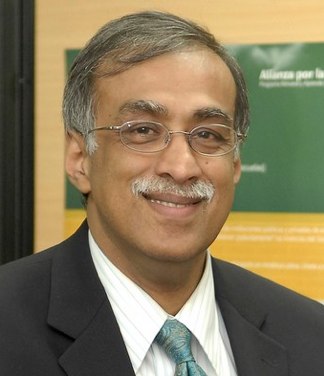Can Microsoft count social good among its top products?
It’s a hard question to answer (for starters, defining and measuring social good is tough) but a fair question to ask in the context of Microsoft’s employee culture of social involvement.
Last year, employee giving and company matched funds totaled nearly $90 million. Volunteer time is matched at $17 per hour; employees can earn up to $12,000 in matched funds from Microsoft every year. There’s also a growing tradition of social enterprise among Microsoft employees and alumni. Former employees have founded and offered leadership support to more than 150 nonprofit organizations and social ventures, while a crop of current employees balance work with running their own nonprofits, among them Givology, Jolkona and CRY America.
 How much of a hand does Microsoft have in influencing this culture of social participation? My assumption was, a lot. But when I spoke with Akhtar Badshah, Microsoft’s Senior Director of Community Affairs, he painted a more nuanced picture.
How much of a hand does Microsoft have in influencing this culture of social participation? My assumption was, a lot. But when I spoke with Akhtar Badshah, Microsoft’s Senior Director of Community Affairs, he painted a more nuanced picture.
Microsoft nurtures a culture and creates incentives that encourage employee giving and volunteering, but the process is organic, says Akhtar. “We provide the framework [Microsoft runs a large database of activities and opportunities that all employees can access] and employees decide how they want to engage.” The $17 per hour match motivates employees to come back and report their work, which Akhtar and his team can then track.
Each October, when Microsoft runs its employee giving campaign, staff and organizations canvas for support on campus. Competitions, speakers and auctions help to engage employees in new organizations and spur donations, but it’s primarily employee-run. Microsoft provides access, incentives and encouragement, and employees leverage this as they want.
When I admitted that the organic nature of this program countered my perception of Microsoft as a supremely structured company, Akhtar said that the type of structure depends on a company’s overarching culture. It works for Microsoft because “we have role models here. We create an atmosphere where people feel they can do this type of thing and make a difference.”
Akhtar shared the following strategies that companies (perhaps with fewer resources) can apply:
- Match your work to your DNA. For Microsoft, it’s using technology to bring about social change.
- Start small and focus on one thing. “There’s nothing like success to help drive you.”
- Look for ways to affect genuine change in the community, but do it with your core competencies.
You can read more from Akhtar on Microsoft’s Unlimited Potential blog and follow him on Twitter at @akhtarbad.















